There are various reptilians found throughout the Philippines, so it’s important to know what might be in the water when you go in.
Alligators and crocodiles can be mistaken for one another, especially when you see them floating on the surface of the water.
Discover more about whether you’ll find alligators, crocodiles, or both in the Philippines.
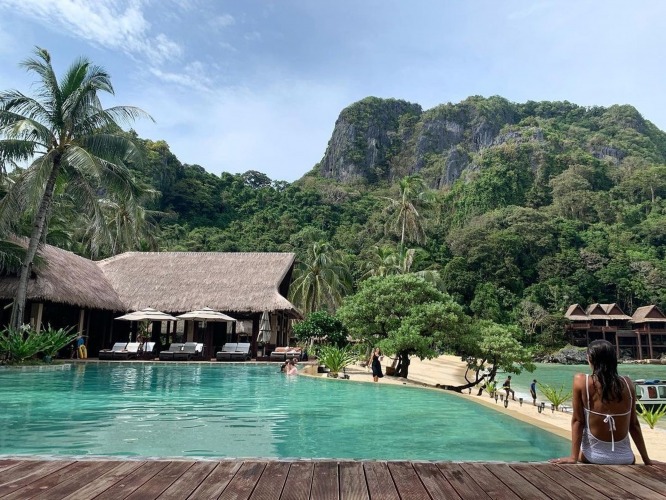
Contents
- So… Are There Alligators in the Philippines?
- Alligator Species in the Philippines
- Is It Safe to Swim in the Philippines?
- Interesting Alligator Facts in the Philippines
- Alligators vs. Crocodiles
- 3 Safety Tips for Swimming in Alligator-Infested Waters
- Summary
- Philippines Safety Overview
- Frequently Asked Questions
So… Are There Alligators in the Philippines?
The Philippines are not a natural habitat for alligators.
While there has been the occasional sighting of an alligator, it is most commonly a result of someone releasing a pet into the wild.
There are only two types of alligators in the world, and neither species is native to the Philippines.
Instead, the only alligators you will find in the Philippines are those that are in captivity.
There are several places where you can go throughout the country so you can see alligators and learn more about them.
This includes the Manila Zoo, the Manila Ocean Park, and Paradizoo.
While you won’t find alligators in the wild, you may find crocodiles.
There are two species of crocodiles located in the Philippines, and many will live in freshwater bodies of water including lakes and rivers.
In the area of Palawan, there are a large number of mangroves.
This leads to a number of crocodile habitats.
A crocodile conservation program is currently in place as a way to protect the lives of humans and crocodiles alike.
Part of this program would involve relocating residents away from crocodile habitats so that people don’t experience the aggressiveness this reptile commonly shows.
As humans settle into the areas where crocodiles have been able to live free, and uninterrupted, there have been more crocodile attacks – and this is particularly true in the province of Palawan.
When you hear about any kind of sighting in the Philippines, it is always a crocodile.
If there is a report about an alligator, it is usually either a hoax or someone being ill-informed only to find out that the animal they saw was actually a crocodile.
Alligator Species in the Philippines
There are two species of alligators and 14 species of crocodiles.
None of the alligator species live in the Philippines while two species of crocodiles do.
The species of crocodiles that are native to the Philippines include the Philippine crocodile and the saltwater crocodile, which is found throughout Asia and the Pacific.
Of the two crocodile species, the saltwater crocodile is bigger and more aggressive.
The Philippine Crocodile is currently listed as “threatened” in its conservation status.
It has been critically endangered as a result of unsustainable fishing and exploitation.
It is a relatively small species in comparison to other species.
It is also a freshwater crocodile, which makes many believe that it is an alligator.
However, it is a crocodile with a broad snout and heavy dorsal armor on its back.
Most adults will rarely get above 9 feet in length or 200 pounds in weight.
The Philippine crocodile is known to be relatively isolated rather than living with others.
It is also commonly found to climb on rocks, which many believe to be a new breeding habit.
The species of crocodile is shy and only gets together with another crocodile during mating season.
The saltwater crocodile is almost the entire opposite of the Philippine crocodile.
It enjoys saltwater habitats as well as brackish wetlands.
It is not in any kind of threatened conservation status, and the population seems to be growing in the Philippines.
It is identified as the largest living reptile in the world.
In some instances, it is also referred to as a sea crocodile or a Marine crocodile.
The saltwater crocodile is commonly referred to as a hyper-carnivorous apex predator.
Most of its prey can be swallowed whole.
It will generally form into groups, which means that when you find one saltwater crocodile, there are likely more nearby.
The appearance of young saltwater crocodiles is also relatively unusual as they are pale yellow with black stripes and spots until they mature into adults.
Is It Safe to Swim in the Philippines?
You’ll find some beautiful beaches and swimming holes throughout the Philippines that are completely safe for you to swim around in.
Some of the top beaches include:
- White Beach
- Long Beach
- Nacpan Beach
- Saud Beach
- ABCD Beach
- Maremegmeg Beach
- Sandira Beach
These beaches are widely known for being visited by tourists and natives alike.
Many have crystal-clear water, allowing you to confirm that there are no threats in the water.
Additionally, many have so much activity happening around them that alligators and crocodiles choose not to be a part of it.
One of the biggest dangers of swimming in the Philippines is drowning.
Some of this can be due to a dangerous current caused by the weather.
The west coast is often reported to have quite the undertow.
Other times, it is caused by alcohol consumption or a general disregard for the rules around the water.
There are some dangers depending on where you want to swim in the Philippines, too.
For example, swimming in Manila Bay is often not safe because of various problems in the water.
You could experience fungal infections or rashes by entering the water until the various bacteria and fungal levels clear up.
If you are swimming in a body of water that is near farmland or pastures, there is a high chance that the water has been contaminated with fecal matter, leading to all sorts of health problems if you enter the water.
Some water is also problematic because it is too shallow or too deep.
If you’re going to enter shallow water, be sure that you aren’t diving.
Meanwhile, if the water is too deep, be sure that you wear a life jacket.
Interesting Alligator Facts in the Philippines
It’s important to remember that there are more than 7,000 islands around the Philippines.
There are all sorts of species of fish, reptiles, and mammals living in and around the water, so it’s bound to turn up a few interesting facts for you to be aware of.
There are over 200 species of sharks and rays in the water around the Philippines however there are no alligators.
Crocodiles used to be prevalent throughout most of the country.
Now, they are primarily only found in a few of the islands, including Luzon, Mindanao, and Dalupri.
Additionally, those on the southern island of Balabac have learned that it’s necessary to co-exist with crocodiles because they are so commonly found.
While crocodiles are generally considered to live in saltwater because of the salt-excreting glands that they have, they call many of the freshwater rivers, ponds, and marshes home.
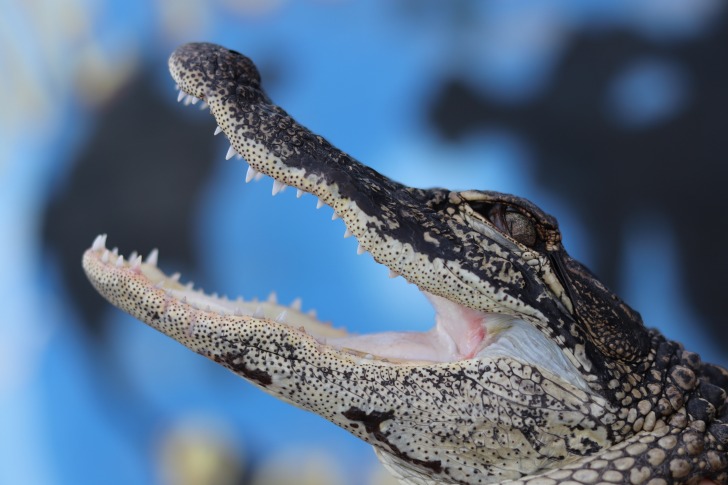
Alligators vs. Crocodiles
Alligators and crocodiles are both considered crocodilians because they are part of the family “Crocodilia.”
While they may be part of the same family, they do have quite a few distinguishing characteristics.
Alligators and crocodiles are both apex predators where they tend to be the toughest animals in their environment.
They thrive in warm, aquatic conditions, which is why they spend a lot of time in the water and along coastlines.
Alligators usually grow to be around 12 feet long and can weigh as much as 800 pounds.
Adult females will generally be smaller than males.
Crocodiles are much larger, with lengths as long as 20 feet, and weights as much as 2000 pounds.
When comparing an alligator to a crocodile, alligators are usually faster on both land and in water because of their smaller sizes and because of their webbed feet.
Appearances can be quite considerable as well.
Alligators are usually gray or black and have rounded snouts.
If their jaws are shut, you won’t see any of their teeth – and they have more teeth than crocodiles.
Crocodiles, on the other hand, are usually brown or green and have V-shaped snouts.
Although they have fewer teeth, you will often see several from the bottom row even when their jaws are clenched tight.
If an alligator and a crocodile wherever to fight, a crocodile would usually come out on top.
The reason is that although alligators are faster, crocodiles are more aggressive and have significantly more bite power.
3 Safety Tips for Swimming in Alligator-Infested Waters
If you are going to swim in alligator or crocodile-infested water, it’s important to follow a few safety tips.
There may be times when you don’t have a choice but to enter the water, so consider doing the following.
- Don’t Go into the Water at Night
Alligators and crocodiles alike are extremely active at night. If you make splashing noises, they may assume that you are prey and attack. It’s best to go into the water during the day when you can see where they might be. - Avoid the Water’s Edge
The water’s edge is where most reptiles reside when they’re not searching for prey. It is also where they are likely to lay their clutch (eggs). By entering at the water’s edge, especially in high grass, you may provoke an alligator into attacking. - Don’t Provoke Them
Alligators generally won’t attack unless you provoke them while crocodiles are extremely territorial and will attack at even the smallest sign of approach. Do what you can not to provoke them, meaning don’t feed them and don’t get too close to them.
Summary
Alligators live in North America (American alligator) and China (Chinese alligator).
As such, you aren’t likely to encounter any alligators in the Philippines unless they are released into the wild by someone keeping one as a pet.
The only other way to see them is in captivity at one of the zoos within the country.
Instead of alligators, you will have to worry about another crocodilian – the crocodile.
Since there are two different species that call the Philippines home, you’ll want to beware any time that you go into the water.
Pay close attention to signage at a lake or river.
Do some research to find out if there have been any recent sightings so you know how much caution to use.
The Philippines have some beautiful beaches and waterways – and many of them do not contain alligators or crocodiles.
You just need to focus on visiting the areas where there aren’t any threats so that you can relax and enjoy yourself.
Philippines Safety Overview
READ THE FULL REPORT: Philippines Safety Review
Safety Index: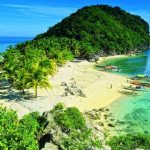
- OVERALL RISK: MEDIUM
- TRANSPORT & TAXIS RISK: MEDIUM
- PICKPOCKETS RISK: HIGH
- NATURAL DISASTERS RISK: HIGH
- MUGGING RISK: MEDIUM
- TERRORISM RISK: MEDIUM
- SCAMS RISK: HIGH
- WOMEN TRAVELERS RISK: MEDIUM
Frequently Asked Questions
Can alligators be kept as pets in the Philippines?
No.
The Wildlife Resources Conservation and Protection Act was signed in 2001 to make it illegal to have various wildlife as pets, which includes both alligators and crocodiles.
Is the Philippine crocodile being protected?
Yes.
The numbers of the Philippine crocodile have been rapidly decreasing as there has been more human growth and development throughout the country.
Many experts are looking to protect the wild population.
How many alligator deaths occur every year?
There are usually around a dozen or so deaths that occur around the world every year as a result of alligators.
However, crocodiles kill an average of 1,000 people a year, showing that they are the more aggressive species within the crocodilian family.
Are crocodiles more aggressive than alligators?
Crocodiles are generally considered to be more aggressive than alligators, which is why it’s dangerous to be in the water with them.
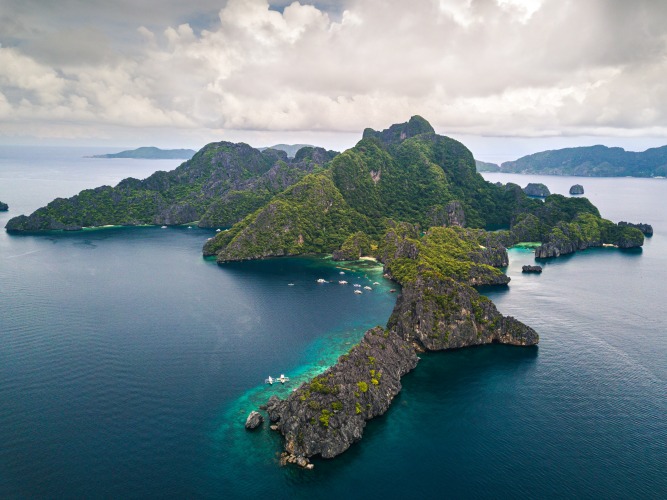
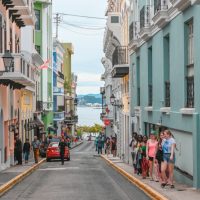
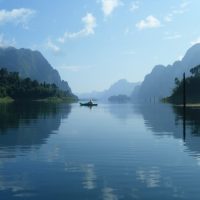









It’s important to be aware of the potential presence of alligators and crocodiles in Philippine waters, but with proper precautions and research, you can still safely enjoy many beautiful beaches and waterways throughout the country.
The Philippines is not a natural habitat for alligators, but there are two species of crocodiles that can be found in freshwater bodies of water including lakes and rivers.